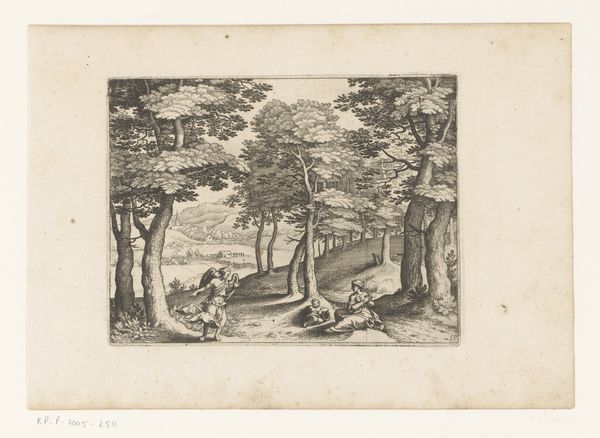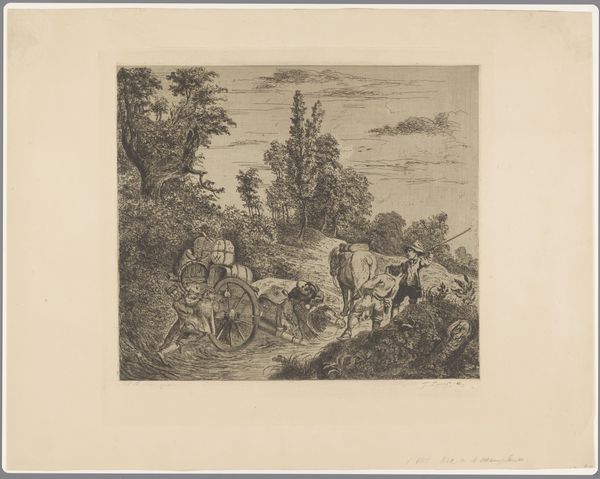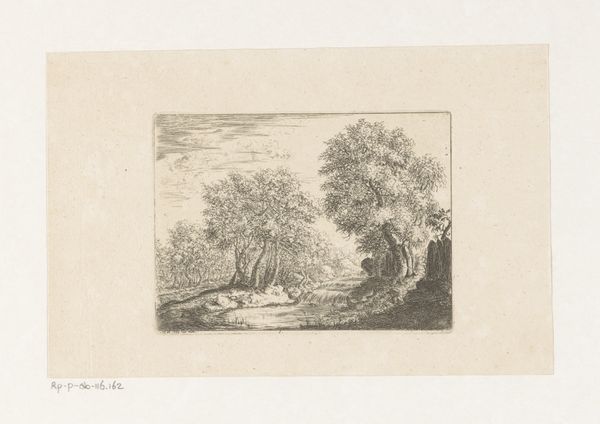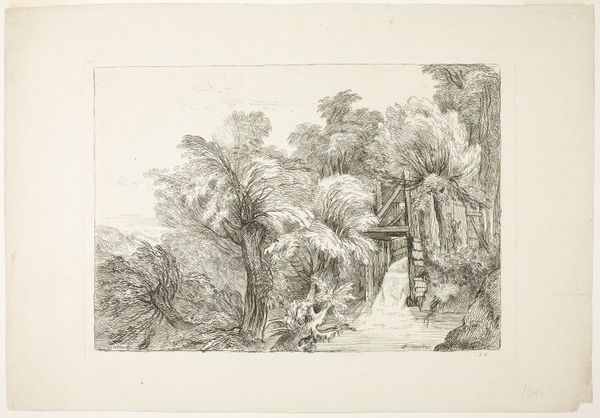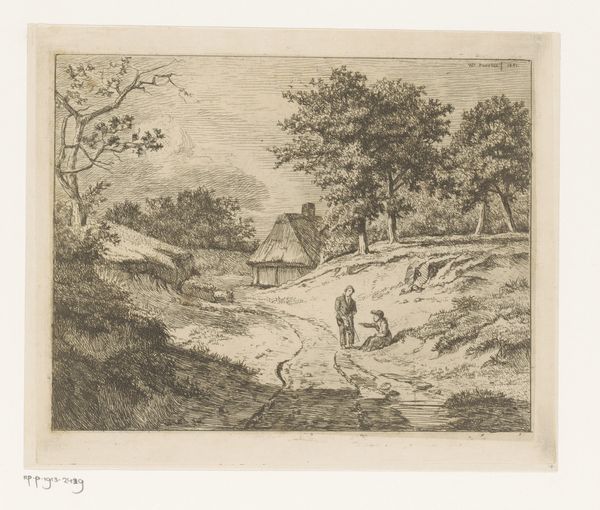
print, intaglio, engraving
#
baroque
# print
#
intaglio
#
landscape
#
river
#
road
#
engraving
Dimensions: height 120 mm, width 165 mm
Copyright: Rijks Museum: Open Domain
Curator: Welcome! Here we have Matthäus Merian’s "Juda en Thamar," an engraving made around 1620, currently residing here at the Rijksmuseum. Editor: My first impression is how serene this seemingly simple composition is. The dense trees create a framed intimate space for what looks like a clandestine exchange. It’s all so quietly rendered in monochromatic precision. Curator: Absolutely. This intaglio print exemplifies baroque landscape traditions of the period. Merian, with his training as a copper engraver, allows us insight into not only biblical narratives but also how power operates in the mundane. The details in the forest guide our eye through an imagined encounter. Editor: An encounter rife with socio-political tension, no doubt. What exactly is being depicted? I’m drawn to their interaction, the symbolism is layered I am sure, specifically as it pertains to identity and the prevailing gender roles. Curator: The work illustrates a rather dramatic and poignant scene from the Book of Genesis. Judah, after the death of his son’s wife, Tamar, unknowingly conceives a child with her when she disguises herself. Here, we’re witnessing the negotiation, if we can even call it that, with a rod, cloth and a goat kid acting as payment. Editor: Disguise and deceit employed as a tool. It strikes me that Merian uses Tamar's character not as a symbol of subversion but a necessity of resistance under patriarchal authority. Do you feel the placement of figures, almost hidden within the forest, is a deliberate choice that adds further resonance to Tamar’s agency in seizing power where it's denied? Curator: Yes, indeed, by choosing this particular moment and emphasizing the surrounding landscape, Merian shifts the focus. Instead of moralizing, we see a negotiation of social roles within the constraints of their world. I feel the choice is not merely stylistic but profoundly conceptual. Editor: It really does allow us to see the familiar narratives in fresh contexts! It’s a call to question and reconsider, positioning Tamar as not just a figure in a story, but a representation of marginalized individuals navigating restrictive systems. Thank you for sharing your perspectives. Curator: And thank you, the historical framework allows for a very valuable understanding, enriching this visual encounter even further.
Comments
No comments
Be the first to comment and join the conversation on the ultimate creative platform.
